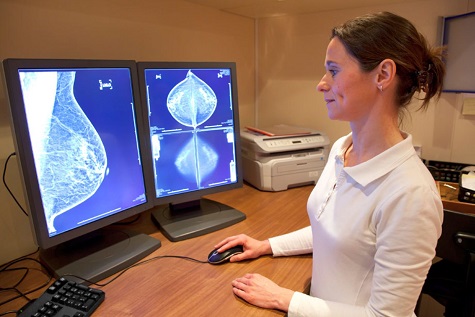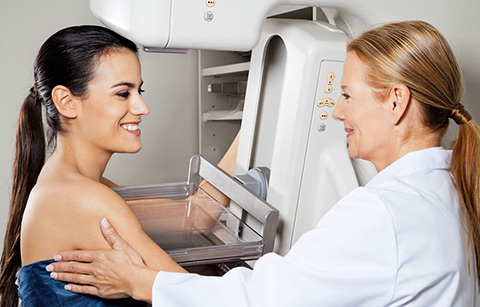Breast cancer diagnosis
 If you have a suspicious lump or other symptom, the doctor must diagnose whether it is due to breast cancer or some other cause. You will have a physical exam and the doctor will ask about your personal and family medical history. If you haven’t already had one, your doctor may order a mammogram or other imaging procedure that makes pictures of tissues inside the breast. After the tests, the doctor may decide that no further tests or treatments are needed or you may have a biopsy done to examine the suspicious area for cancer cells.
If you have a suspicious lump or other symptom, the doctor must diagnose whether it is due to breast cancer or some other cause. You will have a physical exam and the doctor will ask about your personal and family medical history. If you haven’t already had one, your doctor may order a mammogram or other imaging procedure that makes pictures of tissues inside the breast. After the tests, the doctor may decide that no further tests or treatments are needed or you may have a biopsy done to examine the suspicious area for cancer cells.
The breast exam
Your health care provider will feel each breast for lumps and look for other problems. If you do have a lump, your doctor or nurse practitioner can get a lot of information just by feeling the area. Benign (noncancerous) lumps often feel different from cancerous ones. He or she will check the size, shape, and texture of the lump and feel whether it moves easily. Lumps that are soft, smooth, round, and movable are likely to be benign. A hard, oddly shaped lump that feels firmly attached within the breast is more likely to be cancer.
Types of imaging studies
Diagnostic Mammography. Diagnostic mammograms give a more detailed picture than the mammograms used for basic screening. They may be focused on a specific area of the breast to help the doctor learn more about unusual breast changes, such as a lump, pain, thickening, nipple discharge, or change in breast size or shape. They may involve special techniques and additional views than those provided by a screening mammogram.
Ultrasonography uses high-frequency sound waves bounced off the tissues of the breast to create a picture on a monitor screen (the picture can be “saved” and/or printed out). Ultrasound exams can show whether a lump is a fluid-filled cyst (not cancer) or a solid mass (which may or may not be cancer). The exam may be used alone or in addition to a mammogram.
Magnetic Resonance Imaging. For magnetic resonance imaging (MRI), a powerful magnet linked to a computer is used to make detailed pictures of tissue inside the breast. The doctor can view these pictures on a monitor and/or can print them on film. MRI may be alone or in addition to a mammogram.
Biopsy
Biopsy is an outpatient procedure where a sample of breast tissue is removed for examination by a pathologist, to determine if the cells are cancerous or non-cancerous. Keep in mind there are many types of benign as well as malignant masses that may require a biopsy.






